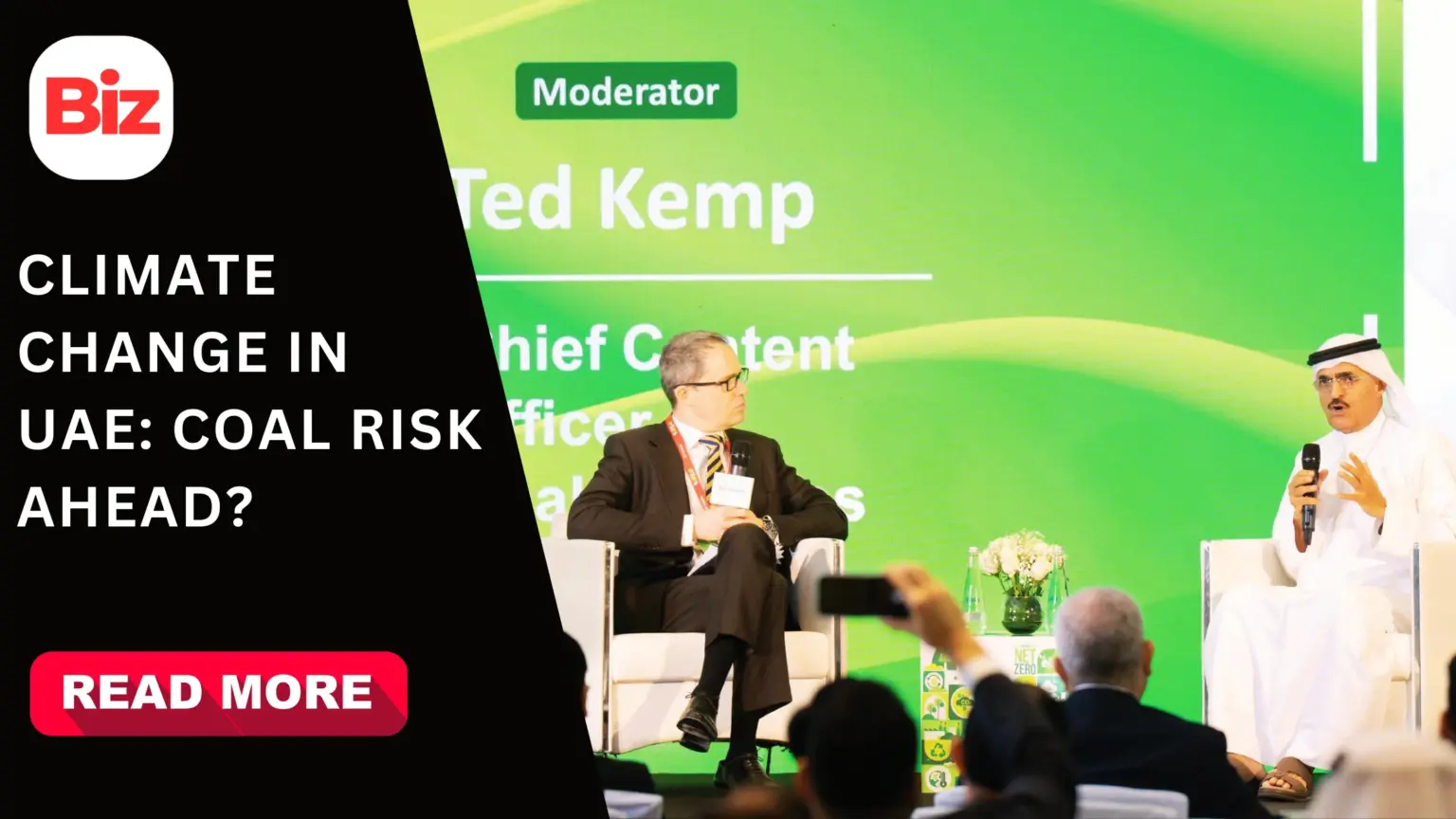Abdullah Belhaif Al Nuaimi, former UAE minister for climate, issued a stark warning at a recent forum. He said unchecked fuel contamination and continuing emissions could push the world back to coal. His remark drew attention across policy and industry circles.
Progress since the Paris Agreement has fallen short of many hopes. Clean sources still account for a small share of global energy. Only about ten percent of global energy currently comes from clean sources, while fossil fuels still supply the vast majority. That gap shapes debates about practical pathways to decarbonise.
The conversation took place at the Journey to Net Zero conference in the UAE. Speakers framed net zero as both an environmental and economic shift. They urged fast, system-level action to halve emissions by 2030. Industry leaders argued that the private sector must mobilise capital at scale.
UAE’s Path Toward Net Zero
The UAE has a Net Zero 2050 Strategy and has announced major renewable projects. Plans include expansive solar parks and one of the world’s largest mangrove restoration efforts. These projects lower costs and build local capacity for clean power. They also create jobs in installation, operations, and maintenance. National leaders promote a portfolio approach that mixes renewables, hydrogen pilots, and emissions management.
International assessments still show gaps in domestic performance. The Climate Change Performance Index ranked the UAE sixty-fifth in 2025. CCPI experts pointed to low marks for energy use and renewable share and to limited policy communication since COP28. That critique underlines the need for clearer reporting and timelines.
Gulf economies face a hard trade-off between fiscal stability and decarbonisation. Oil and gas underpin state revenues and public services in the region. Carnegie explains that this reality forces a dual transition strategy across Gulf states. Governments must protect budgets while building clean-energy capacity.
Fossil Fuels and Future Energy
Analysts expect some hydrocarbons to remain part of future mixes. The IEA suggests oil and gas supply could fall sharply under net-zero scenarios, but demand would not vanish entirely. Gulf producers therefore plan higher-value uses for hydrocarbons and cleaner production methods.
If emissions keep rising, markets could favour the cheapest fuels. That dynamic could revive coal in parts of the world where alternatives remain costly or unreliable. Global carbon emissions trends will determine whether markets move toward cleaner options. Countries that cut faster reduce the chance of a coal rebound.
Policymakers must ask clear questions about fiscal and industrial futures. They must model revenue losses and redesign budgets to support the transition. A central question remains: what will happen to fossil fuels in the future and to economies that depend on them?
Linking Climate Strategy to Finance
Climate change in the UAE strategy must tie into national budgets and planning processes. Leaders need predictable signals to attract long-term investment. Transparent timelines and regular reporting build market confidence.
Public finance plays a catalytic role in addressing climate change in the UAE. Sovereign funds can underwrite long-term returns for private investors. National oil companies can pivot some investments toward renewables and hydrogen. That shift would change market expectations and encourage technology scale-up.
Green hydrogen, carbon capture, and grid upgrades require scaling beyond pilots. Commercial deployment will lower costs and change energy economics over time. Transition plans must include reskilling programs for workers in carbon-intensive sectors. Social protection helps avoid sharp disruptions to livelihoods. Designing fair policies reduces political resistance and smooths implementation.
Regional Cooperation and Industry Action
The UAE can pursue regional cooperation on power trade, hydrogen hubs, and standards. Joint projects cut costs and attract global partners. Shared rules on emissions and labelling can open export markets for low-carbon goods.
ADNOC has adjusted its corporate net-zero timeline to reflect urgency, a signal of changing industry priorities. That corporate shift shows where national strategy and company action can align. Climate change in the UAE policy must bridge public targets and corporate commitments.
The government should make climate change in the UAE the central axis of industrial policy. It should also answer this question clearly: what will happen to fossil fuels in the future in different demand scenarios?
Scaling Up Renewable Projects
Concrete projects illustrate the scale of UAE ambition. Many renewable programmes now move from planning to construction. For example, large-scale solar development such as the Al-Dhafra PV project proves resilience in delivery. These projects lower costs and build local capacity for clean power. They also create jobs in installation, operations, and maintenance.
Public finance plays a catalytic role in early deployment. Sovereign funds can underwrite long-term returns for private investors. National oil companies, with large capital bases, can pivot some investments toward low-carbon ventures. That shift would change market expectations and encourage technology scale-up.
Still, oil and gas will remain economically significant for years. The Gulf holds a substantial share of global reserves, which drives long-term planning. Carnegie notes the region controls roughly thirty percent of global oil reserves. That reality explains why policymakers craft gradual transition pathways.
Strengthening Domestic Climate Policies
At the same time, the UAE must tighten domestic policy frameworks. Climate change policy in the UAE needs clearer targets, budgets, and enforcement mechanisms. City planners and regulators must align building codes with efficiency goals. Transport planning should prioritise electric mobility and efficient freight movement.
International trade rules will shape clean product demand. Carbon standards and border adjustments will influence export competitiveness. In this context, tracking global carbon emissions remains essential for risk assessments. Bringing emissions down worldwide reduces pressure on price-sensitive energy markets.
Role of Society and Global Cooperation
Civil society and consumers also matter. Corporate buyers can commit to low-carbon supply chains. That commitment drives demand for cleaner inputs and fuels. In turn, markets reward early movers and innovators.
Addressing climate change in the UAE requires aligning budgets with long-term climate risk. That includes contingency planning for revenue declines in oil and gas. It also requires investing in exportable low-carbon industries. If the country acts decisively, it can reduce the odds of a coal resurgence.
Speed and clarity matter when markets and technologies move fast. Stronger communication, fiscal reform, and targeted investment can lower coal risks. International cooperation will determine whether markets tilt toward clean sources or revert to dirty ones. The UAE has financial depth and technical capacity to lead. It can shape regional outcomes and help limit global carbon emissions.
Recommended For You
Climate Change Solutions | Carbon Health & Environmental Action Programme








